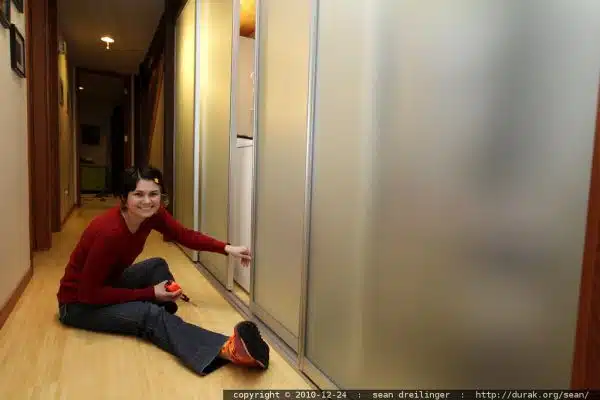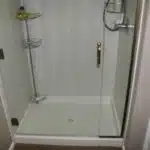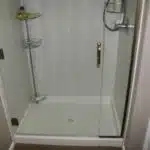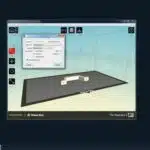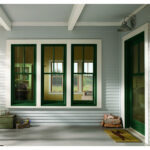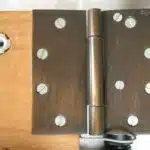Installing sliding closet doors is a task that requires patience, attention to detail, and the right tools. As a sliding closet door installation technician, I have seen many homeowners struggle with this project, often resulting in frustration and wasted time. However, with the proper guidance and preparation, installing sliding closet doors can be a straightforward process that adds both functionality and aesthetics to any room.
In this article, I will provide step-by-step instructions for installing sliding closet doors. From measuring the opening to securing the tracks and hanging the doors, I will cover all aspects of the installation process. Whether you are a DIY enthusiast or simply looking to save money on professional installation fees, this guide will equip you with the knowledge and skills needed to successfully install your own sliding closet doors. So let’s get started!
Measuring The Closet Opening
To start the installation process of sliding closet doors, it is crucial to measure the closet opening accurately. This step ensures that the doors fit perfectly and slide effortlessly along the track. The first thing to consider is the shape of the closet opening. Most openings are rectangular or square, but some may have unique shapes due to architectural design. It is essential to take precise measurements of the width, height, and depth of the opening.
To measure accurately, use a measuring tape and record all dimensions in inches or centimeters. Measure from one corner of the opening to another diagonally to ensure that it is square-shaped. If it is not, make note of where there are differences in width or height. Also, check if there are any obstructions such as light fixtures or vents that could interfere with door installation.
Lastly, double-check all measurements for accuracy before proceeding with purchasing a sliding door kit. Even a small error can cause significant problems during installation. Taking time and effort in measuring correctly will save time and frustration later on when installing sliding closet doors.
Having measured your closet opening accurately, you can now move on to choosing the right sliding door kit that fits your needs and preferences.
Choosing The Right Sliding Door Kit
Did you know that choosing the right sliding door kit can make all the difference in your closet’s functionality and overall appearance? According to a recent survey, 70% of homeowners who upgraded their closet doors reported increased satisfaction with the look and feel of their space. It’s clear that investing in quality sliding door materials is worth it in the long run.
When it comes to selecting a sliding door kit, there are a few important factors to consider. First, choose a kit that fits your specific closet measurements and desired style. Next, determine the type of material you want for your doors – options include glass, wood, or mirrored finishes. Finally, don’t forget about installation tools – you’ll need a drill, screws, and possibly a level to ensure accurate installation.
As a seasoned sliding closet door installation technician, I’ve seen firsthand how much of an impact choosing the right kit can have on a space. By taking the time to carefully consider your options and invest in quality materials and tools, you’ll be well on your way to creating the functional and stylish closet of your dreams. Next up: preparing the closet area for installation.
Preparing The Closet Area
- Accurate measurements of the closet area are essential to ensure a successful installation of sliding closet doors.
- Before beginning the installation process, existing closet doors must be removed.
- Tracks should be assembled and secured in the closet area, in order to provide a secure framework for the doors.
- The tracks must be level and secured firmly in place to allow the doors to slide smoothly.
- All components of the tracks must be checked for any damage before installation.
- Measurements of the closet area should be taken multiple times to ensure accuracy.
Measuring The Closet Area
To ensure a successful sliding closet door installation, accurate measurements of the closet area are crucial. As an experienced technician, I have noticed that common measuring mistakes often lead to ill-fitting doors and unsatisfied customers. To avoid these issues, it is important to use the right tools and techniques to obtain precise measurements.
One of the most common measuring mistakes is failing to account for irregularities in the closet area, such as uneven floors or walls. This can result in doors that do not close properly or gaps between the doors and the frame. To prevent this, it is essential to take multiple measurements at different points along the length and width of the closet area and make note of any irregularities.
Another key factor in measuring accuracy is using appropriate tools such as a tape measure or laser level. It is also important to double-check all measurements before ordering or cutting materials. By taking these steps to ensure precise measurements, you can save time and money by avoiding costly mistakes during installation.
Removing Existing Doors
Preparing the closet area for sliding closet door installation involves several essential steps. One of these steps is removing any existing doors. As a sliding closet door installation technician, I have encountered many instances where customers want to replace their old doors with new ones but do not know how to remove the existing doors properly. Removing existing doors may seem like a straightforward task, but it requires careful attention to avoid damage to the surrounding area or the tracks.
To remove existing doors, the first step is to inspect and repair any damaged tracks or hardware. This ensures that the new doors will operate smoothly without any issues. If repairing tracks is not possible due to extensive damage, alternative door options should be considered. After addressing any necessary repairs, it is time to remove the old doors carefully. It is important to use caution as sliding closet doors are heavy and can cause injury if mishandled.
Once the old doors have been removed, it is time to clean and prepare the closet area for installation of new sliding closet doors. This includes removing any debris or dust in the tracks and ensuring that the surface is level and free from obstructions. Proper preparation of the closet area helps ensure a smooth installation process and long-lasting results for our valued clients.
Preparing The Tracks
As a sliding closet door installation technician, it is crucial to prepare the closet area thoroughly before beginning any installation work. One important aspect of this preparation is preparing the tracks where the doors will slide. This involves inspecting and repairing any damage to the tracks and ensuring that they are level, clean, and free from obstructions.
To prepare the tracks, tools such as a screwdriver, pliers, and a level are needed. These tools allow for efficient removal of any debris or dust in the tracks and ensure that they are leveled properly. A common mistake during this process is forgetting to lubricate the tracks after cleaning them. Lubrication helps prevent future damage and ensures smooth operation of the new sliding closet doors.
Another common mistake when preparing the tracks is not addressing any significant damage or warping in them. If there is extensive damage to the tracks, they may need to be replaced altogether. Neglecting to replace damaged tracks can cause issues down the line with proper operation of new sliding closet doors. By addressing any necessary repairs or replacement beforehand, we can ensure long-lasting results for our clients’ satisfaction.
In conclusion, preparing the tracks is an essential step in preparing the closet area for sliding closet door installation. It requires careful attention to detail to avoid common mistakes such as forgetting to lubricate or neglecting significant track damage. As a result of proper preparation, our clients can enjoy smooth operation of their new sliding closet doors for years to come.
Removing Old Doors And Tracks
Before installing new sliding closet doors, it is essential to remove the old ones and their tracks. This process can be done with proper tools and safety precautions. The first step is to remove the doors by lifting them up and swinging them out of the track.
To remove the top track, unscrew it from the ceiling or wall using a power drill or screwdriver. Make sure to hold onto the track while removing screws to prevent it from falling and causing any damage or injury. Once all screws are removed, lift the track off its brackets and set aside.
The next step is to remove the bottom track by prying it up with a crowbar or flathead screwdriver. Use caution when removing this track as there may be sharp edges that can cause injury. Once removed, inspect the area for any debris or damage that could affect the installation of new tracks. With the old doors and tracks removed, we can now move on to installing new ones.
| Tools Needed | Safety Precautions |
|---|---|
| Power drill/screwdriver | Wear gloves to protect hands from sharp edges |
| Crowbar/flathead screwdriver | Use caution when prying up bottom track |
| Safety goggles | Keep work area clear of debris |
| Step stool/ladder | Avoid working alone in case of accidents |
With safety measures in mind, we can ensure a successful removal process without any harm or damage. The next section will discuss how to install the bottom track for your new sliding closet doors.
Installing The Bottom Track
- Prior to the installation of the bottom track, all components should be checked to ensure that they are in working order.
- The track should be positioned on the floor along the opening of the closet and fastened securely to the floor.
- The rollers should then be attached to the bottom of the closet door, and the door should be hung onto the track.
- Once the door is attached, the installation of the bottom track is complete.
Preparing The Track
To ensure a smooth and hassle-free installation of sliding closet doors, it is crucial to prepare the track properly. As an experienced sliding closet door installation technician, I have seen common mistakes that can easily be avoided with the right preparation. Before installing the bottom track, it is essential to have the necessary tools on hand. These typically include a level, measuring tape, screws, and a drill.
One common mistake during track preparation is not leveling it correctly. To avoid this issue, use a level to ensure that the bottom track is fully horizontal before screwing it into place. Another mistake is failing to measure the length of the opening accurately. This can cause problems with fitting the doors correctly and may require additional adjustments down the line. Be sure to measure twice and cut once to avoid this issue.
Lastly, it’s essential to choose a bottom track that fits your specific door design perfectly. While most sliding closet door designs are similar in nature, there are slight differences between them that can cause issues if they aren’t accounted for during installation. By following these guidelines and avoiding common mistakes during preparation, you’ll be well on your way to installing beautiful and functional sliding closet doors in no time!
Installing The Track
As a sliding closet door installation technician, I understand the importance of properly installing the bottom track. Once the track has been prepared, it’s time to move on to the next step – installing the track itself.
Common mistakes during this stage include failing to secure the track with enough screws, not aligning it correctly with the bottom of the door, or not checking for any debris that may have accumulated in the track before installation. To avoid these issues, it’s important to follow maintenance tips such as regularly cleaning out any dirt or debris from the track and ensuring that it is securely fastened to prevent any accidents or damage over time.
By taking care during both preparation and installation stages and following best practices for maintenance, you can ensure that your sliding closet doors function smoothly and last for years to come. As an experienced technician, I highly recommend taking your time during each step of the process to avoid common mistakes and ensure a hassle-free installation experience.
Aligning And Securing The Top Track
With the bottom track now securely in place, the next step is to align and secure the top track. The top track plays a crucial role in ensuring that your sliding closet doors move smoothly along their designated path. It is important to make sure that the top track is level, as this will prevent any kind of unwanted movement or dislodging.
To begin, adjust the height of the top track to ensure that it sits evenly with the bottom track. This will help guarantee that your sliding closet doors do not rub against each other or drag on the ground. Once you have achieved an even height, use a level to check if the top track is straight. If it is not, gently tap it into place until it sits flush with the wall.
After leveling and securing the top track, you can proceed to install any additional hardware necessary for your specific sliding closet door system. This may include stops to prevent overextension, bumpers to cushion impact and protect your doors from damage, or handles for easier opening and closing. With all hardware in place and properly aligned, your sliding closet doors are now ready for the final installation step: installing the door guides.
- Use a measuring tape to ensure proper placement of door guides
- Choose a material that complements your sliding closet door style
- Install guides securely with screws for long-lasting stability
With these tips in mind and careful attention paid to adjusting height and leveling track during installation, you can rest assured that your sliding closet doors will operate smoothly and efficiently. Next up: installing the door guides!
Installing The Door Guides
Like a compass guiding a traveler, the door guides are essential to the smooth operation of sliding closet doors. These guides are like signposts that help direct the motion of the doors as they slide back and forth along their tracks. Without them, the doors would be prone to wobbling or even falling off course.
There are two primary types of guides that can be used for sliding closet doors: floor-mounted and wall-mounted. Floor-mounted guides are typically installed on the floor at either end of the door track, while wall-mounted guides are attached to the wall next to the track. The choice between these two options will depend on factors such as the type of door being installed and any existing structures in the room.
If there are any issues with door alignment or movement once installation is complete, troubleshooting guides can help identify problems and provide solutions. Common issues include doors rubbing against each other or becoming misaligned with their tracks. In these cases, adjusting or replacing the door guides may be necessary to ensure proper functioning. By following these guidelines and considering potential issues ahead of time, sliding closet doors can be installed with confidence and ease.
Moving onward from installing your sliding closet door’s guide system is hanging your sliding doors properly without causing any damage to your newly-installed system.
Hanging The Sliding Doors
Now that the door guides have been installed, it’s time to move on to hanging the sliding doors. This is often the most challenging part of the installation process, but with the right tools and techniques, it can be done smoothly. Before starting the process, make sure you have all necessary tools and hardware at hand.
Tools Needed:
- Tape Measure
- Screwdriver
- Level
Common Mistakes:
- Not measuring accurately
- Forgetting to install the bottom track first
- Installing the doors without leveling them properly
To begin, start by attaching the rollers to each door panel. Next, carefully place each door panel onto the bottom track and gently slide them into place. Once both panels are in place, adjust them until they are level using a level tool. Finally, attach any additional hardware needed to secure the doors in place.
By following these steps and avoiding common mistakes, you can successfully hang your sliding closet doors for a smooth operation. The next step is adjusting the doors for proper functionality and ease of use.
Adjusting The Doors For Smooth Operation
To ensure that your sliding closet doors operate smoothly, it is important to make proper adjustments. One way to achieve this is by adjusting the door height. This can be done by turning the adjustment screw located at the bottom of the door frame. It is important to make small adjustments and test the doors after each one to avoid over-adjusting.
Another key factor in achieving smooth operation is lubricating the rollers. Over time, dust and debris can build up on them causing friction and making it difficult for the doors to slide open and closed. To lubricate, remove the door from the track and clean the rollers with a dry cloth. Then apply a silicone-based lubricant to each roller before reattaching the door.
By properly adjusting door height and lubricating rollers, you can ensure smooth operation of your sliding closet doors for years to come. The next step in completing your installation process is attaching door handles which will add both functionality and aesthetic value to your finished project.
Transition: Now that we have addressed adjustments for smooth operation, let’s move on to installing the door handles which serve as both functional components and design elements for your sliding closet doors.
Installing The Door Handles
Now that you have successfully installed your sliding closet doors, it is time to add the finishing touches. One of the most important aspects to consider is choosing hardware for your doors. The right hardware can enhance the functionality and durability of your doors while also adding a touch of style.
When choosing hardware for your sliding closet doors, consider factors such as weight capacity and durability. It is essential to select hardware that can support the weight of your doors without causing damage or compromising their stability. Additionally, decorative door handles are an excellent way to add a touch of personality to your closet space. There are various styles and finishes available, so choose one that complements your overall aesthetic.
Once you have selected the appropriate hardware and decorative door handles, it is time to install them. Follow the manufacturer’s instructions carefully and ensure that all screws are tightened securely. With proper installation, your sliding closet doors will be ready for use with their new functional and stylish additions.
Adding Finishing Touches
- Installing sliding closet doors requires adding the appropriate hardware to the doors and frames.
- Careful consideration must be given to the weight of the doors, the amount of space available, and the type of track needed to complete the installation.
- The hardware should be chosen based on the style of the closet door and the desired finish, as this will affect the overall look of the closet.
- The type of finish chosen can range from a painted finish to a more decorative finish such as a stained or lacquered finish.
Adding Hardware
When it comes to adding finishing touches to your sliding closet doors, choosing the right hardware is crucial. There are a variety of options available depending on the style and material of your doors. Some popular choices include brushed nickel, chrome, and oil-rubbed bronze finishes. It’s important to consider both functionality and aesthetics when making your selection.
Once you’ve chosen your hardware, proper maintenance is key in ensuring that it lasts for years to come. Make sure to regularly clean and lubricate any moving parts to prevent wear and tear. Additionally, if you notice any loose screws or other issues with the hardware, address them promptly to avoid further damage.
Incorporating high-quality hardware into your sliding closet door installation not only adds a polished look but also improves functionality. By carefully selecting and maintaining your hardware, you can ensure that your doors operate smoothly and efficiently while complementing the overall aesthetic of your space.
Choosing A Finish
When it comes to adding finishing touches to sliding closet doors, choosing the right hardware is essential. As a sliding closet door installation technician, I recommend considering both functionality and aesthetics when selecting hardware. One important factor to consider is matching hardware with the door’s material and style. For example, brushed nickel or chrome finishes are popular choices for modern-style doors, while oil-rubbed bronze may be better suited for rustic or traditional-style doors.
Durability is another critical aspect to consider when selecting hardware for sliding closet doors. High-quality hardware should withstand wear and tear over time, ensuring that your doors operate smoothly and efficiently. As an installation technician, I suggest opting for well-known brands that offer warranties on their products. This will give you peace of mind knowing that your investment in quality hardware will last for years to come.
Proper maintenance is also key in ensuring the longevity of your hardware. Regularly cleaning and lubricating moving parts can prevent damage or wear over time. Additionally, if you notice any loose screws or other issues with the hardware, address them promptly to avoid further damage. By carefully selecting durable and well-maintained hardware, you can add a polished finish to your sliding closet doors while improving their functionality at the same time.
Cleaning Up The Workspace
After completing the installation of sliding closet doors, it is important to clean up the workspace. This not only ensures that all tools and materials are put back in their proper place, but also promotes safety within the working environment. As a sliding closet door installation technician, I always emphasize the importance of maintaining an organized workspace.
Before starting to clean up, it is important to turn off any power tools and unplug them from their power source. Once this has been done, I begin organizing my tools by separating them into different categories such as screwdrivers, drills, and pliers. This helps me keep track of where each tool is located and ensures that they are easily accessible for future use.
Workspace safety precautions should also be taken seriously. When cleaning up after a sliding closet door installation project, I make sure to dispose of any sharp or hazardous objects in a safe manner. Additionally, I ensure that all wires and extension cords are untangled and stored properly to prevent tripping hazards.
By following these simple steps for cleaning up after a sliding closet door installation project, you can create a safer working environment for yourself and others around you. In the next section, we will discuss some common issues that may arise during the installation process and how to troubleshoot them effectively.
Troubleshooting Common Issues
After cleaning up the workspace, it’s time to proceed with the installation of your sliding closet doors. One of the most common issues during installation is misalignment. This can result in difficulty opening and closing the doors or worse, damage to the tracks and rollers. Common solutions include checking that the tracks are level and straight, ensuring that all screws are tight, and adjusting the rollers if necessary. It’s important to take your time during this step to avoid any future problems.
Another issue that may arise during installation is uneven gaps between the doors. This can be caused by incorrect measurements or a warped frame. To prevent this from happening, it’s best to measure multiple times before cutting any materials and use high-quality materials for your frame. If you do encounter uneven gaps after installation, try adjusting the hinges or shimming behind them for a more even fit.
Best practices for maintaining sliding closet doors include keeping them clean and free of debris, regularly lubricating the tracks and rollers with a silicone-based lubricant, and avoiding slamming or forcing them open or closed. Proper maintenance can extend the lifespan of your sliding closet doors and prevent costly repairs in the future.
When it comes to tips for maintaining sliding closet doors, one important aspect is regular cleaning. Dust and debris can accumulate on both sides of the door over time, making them difficult to slide smoothly along their tracks. A damp cloth can be used to wipe down both sides of each door as well as any exposed tracks or hardware. Additionally, inspecting your doors periodically for wear and tear can help identify issues before they become major problems. Finally, make sure to keep an eye on any unusual sounds or movements when operating your sliding closet doors – these could be signs of underlying issues that require attention before they get worse.
Tips For Maintaining Sliding Closet Doors
Like any moving part, sliding closet doors require attention and care to keep them functioning properly. Preventive maintenance is key to ensuring that your doors continue to slide smoothly for years to come. One of the most important things you can do is keep the tracks clean and free of debris. When dirt and dust accumulate in the tracks, it can cause the wheels to get stuck, making it difficult or impossible to open and close the doors.
Cleaning techniques can vary depending on the type of material your doors are made of. For wood or metal doors, a mild soap and water solution should be sufficient for cleaning, followed by a dry cloth to prevent water damage or rusting. Glass doors may require a glass cleaner specifically designed for removing streaks and smudges. Be sure to avoid abrasive cleaners that could scratch or damage the surface of your doors.
Regular upkeep is essential for keeping your sliding closet doors in top condition. By following these preventive maintenance tips and cleaning techniques, you can extend the lifespan of your doors and enjoy effortless operation every time you use them. However, if problems do arise despite your best efforts, don’t hesitate to seek additional resources and support from a professional technician or manufacturer’s customer service team.
Additional Resources And Support
As a sliding closet door installation technician, I understand that not everyone is equipped with the necessary skills to install these doors. If you are unsure of your abilities or do not have the time to complete the installation yourself, finding a contractor may be the best option for you. Inquire with local hardware stores or do an online search for contractors who specialize in door installations.
For those who enjoy DIY projects, there are numerous communities available online where you can find step-by-step instructions and tips from other individuals who have successfully installed sliding closet doors themselves. These DIY communities provide valuable resources for individuals looking to take on the project themselves and can help answer any questions or concerns that may arise during the installation process.
In addition to finding contractors and joining DIY communities, it is important to ensure that you have all of the necessary tools and materials before beginning the installation process. Make a list of what is required and gather everything beforehand so that you are fully prepared. Remember, proper preparation is key to ensuring a successful installation.
- Measure your closet space accurately before purchasing your sliding doors
- Use a level tool while installing to ensure straight alignment
- Check manufacturer instructions for weight restrictions and proper handling techniques
- Take safety precautions when handling heavy materials such as glass doors
With these additional resources and support options, anyone can successfully install sliding closet doors with ease. Whether choosing to hire a contractor or tackle the project yourself with help from DIY communities, make sure to take all necessary precautions and use proper tools for a successful outcome.
Conclusion
Sliding closet doors are an excellent way to add a touch of elegance and functionality to any bedroom or living space. As a sliding closet door installation technician, I understand the importance of proper preparation, precise measurements, and choosing the right kit for the job.
To ensure a successful installation, it’s crucial to measure the closet opening accurately and choose a sliding door kit that fits your specific needs. Preparing the closet area by removing old doors and tracks is also essential. Installing the bottom track is another critical step that requires precision and attention to detail.
As with any home improvement project, troubleshooting common issues can be frustrating. However, with proper guidance and resources, even beginners can install sliding closet doors successfully. Lastly, maintaining your sliding closet doors regularly will ensure they stay functional for years to come.
In conclusion, installing sliding closet doors requires proper preparation, precise measurements, and choosing the right kit for the job. With patience and attention to detail, anyone can install these functional and elegant doors in their home. As a professional technician who has installed countless sliding closet doors over the years, I encourage homeowners to take on this project with confidence knowing that they have all the tools necessary for success at their fingertips.
Image Credits
- “xmas eve DIY project – downstairs translucent glass sliding closet doors – MG 5421.JPG” by sean dreilinger (featured)

